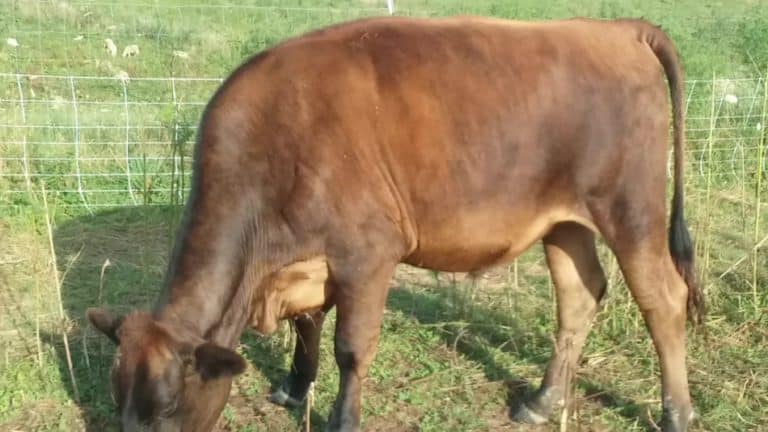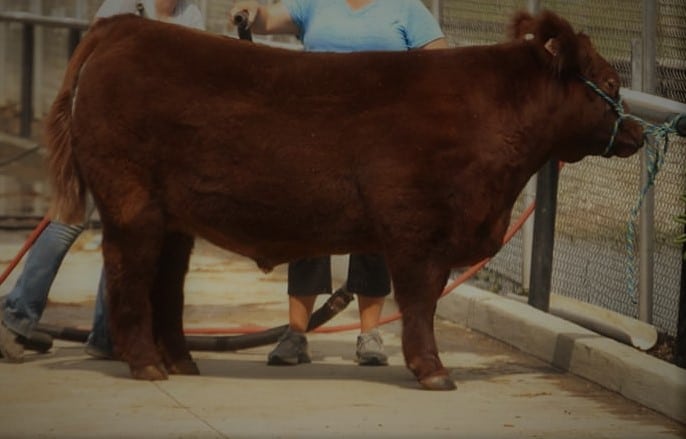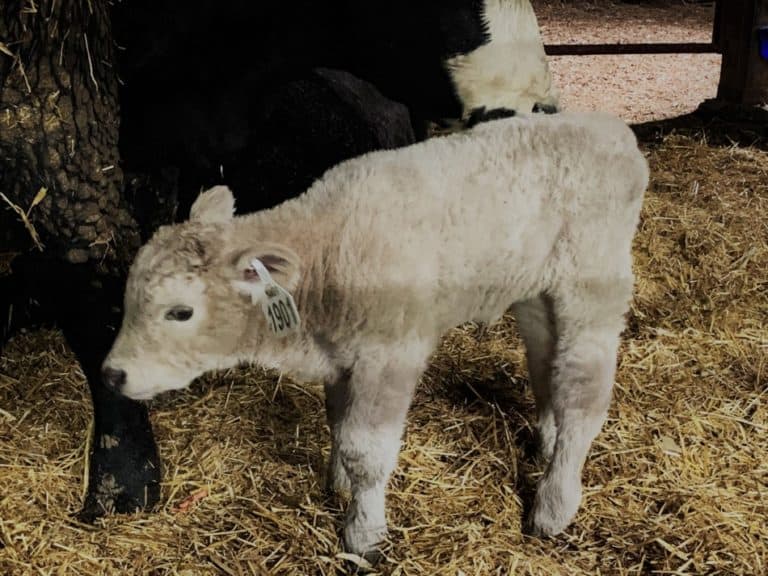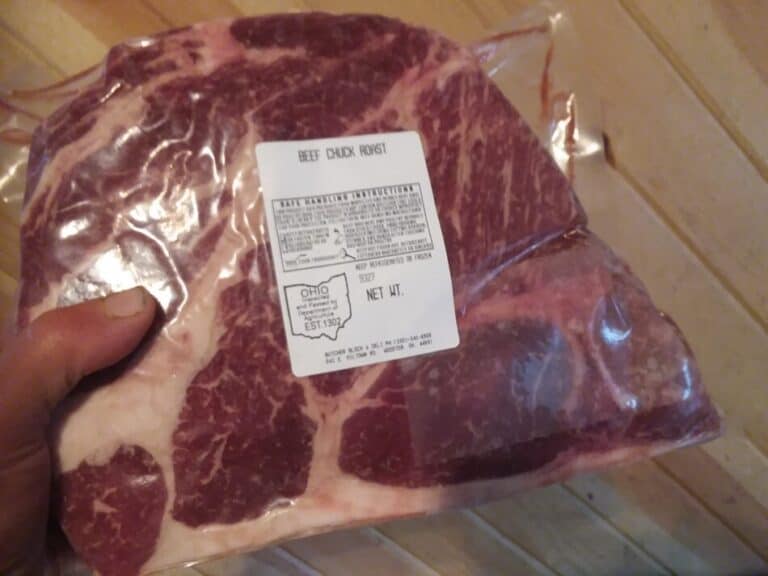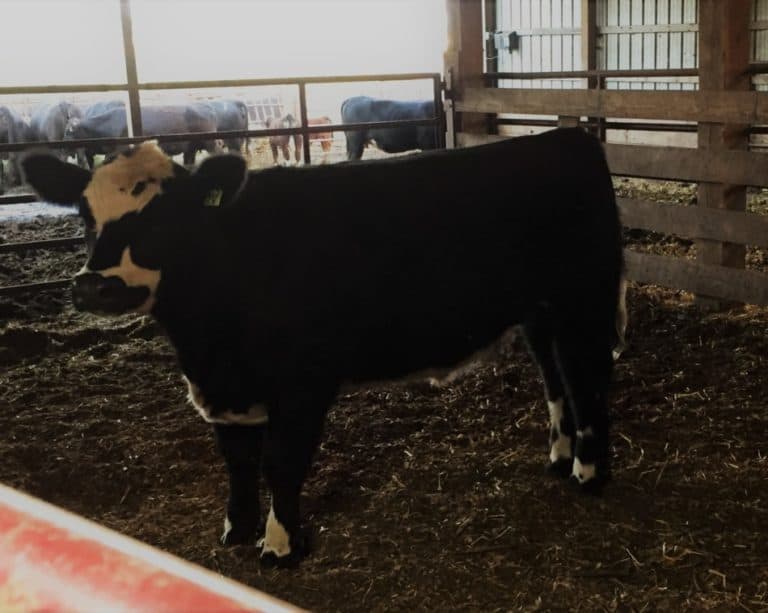You Don’t Have To Be A Rancher! Raise A Dairy Steer
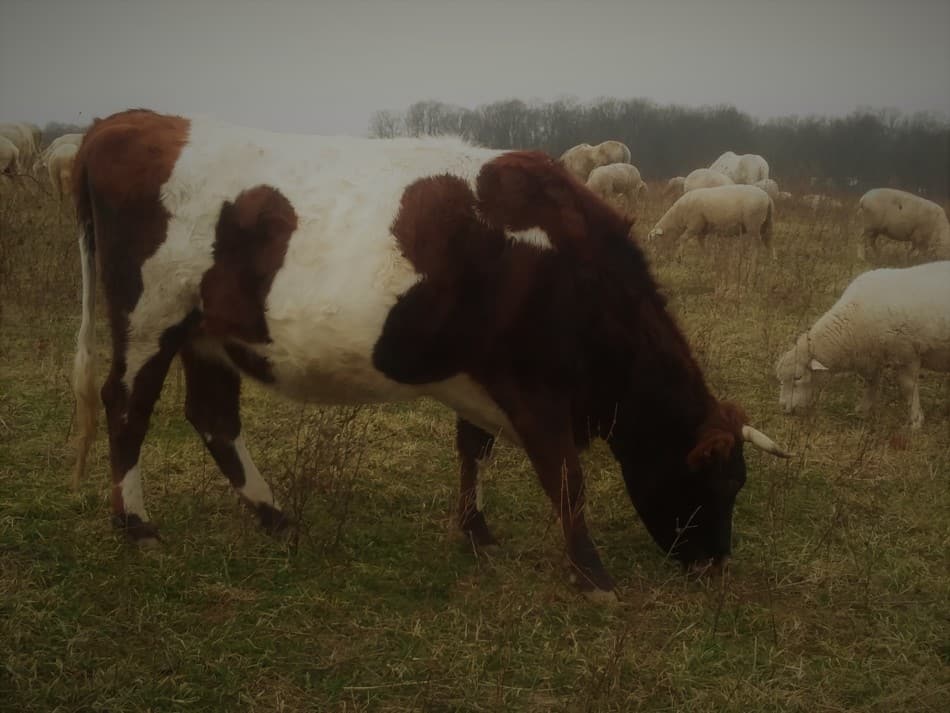
Raising your own beef is a huge step up in nutrition for you and your family! Will raising a dairy steer work well for you and your family?
What are the good points and the not so good points of using dairy based genetics for your freezer beef?
Choosing to raise a dairy steer for beef will get you a less expensive and more manageable calf to start with and delicious, full flavored, home raised beef for your freezer.
Dairy breed steers are great for beef! Dairy breed or dairy cross steers tend to be a calmer, more easily managed calf that is a great choice for you to start your raising your own beef!
Needing a bit more information before you’ll feel comfortable making this decision? I’ve got you covered! Here’s some information I’m betting will surprise you!
Is Raising Your Own Beef Worth It? goes over the costs and benefits of raising your own beef versus buying it from another small farmer.
When Is My Steer Ready To Butcher? shows you what specifically to look for on your steer to know if he is finished (meat is well marbled).
Quoted below is a very interesting, statistic regarding prime beef from dairy steers, Holsteins specifically.
For anyone who is not aware of the grades of beef, prime is the highest grade of beef possible.
Prime beef has tons of marbling and is the best available for eating, especially steaks.
Between 2002 and 2018, Holstein steers have contributed between 32 and 60% of prime beef harvested in the U.S.
https://www.farmanddairy.com/news/dairy-cattle-a-big-part-of-us-beef-supply/552832.html
Read the article if you get a chance, it’s an eye opener!
Another point I want to emphasize is that the article refers to Holstein specifically, since they are the most commonly found dairy breed in the U. S., but the idea that dairy beef is frequently grading prime will be applicable to nearly all dairy breeds.
We’ll start with the pros and cons of dairy beef then move to more general questions. As with all things, nothing is perfect.
Dairy beef has it’s high points and it’s drawbacks, let’s look into both.
Cost To Butcher Your Own Beef gives you a price breakdown for your butchering costs so you can know what to expect.
Pros of raising a dairy steer for beef
- Great beef from a lower priced calf
- Calmer, less reactive calf to manage
- Easy to get any time of the year in a dairy region
- Many dairy farmers raising breeding for half beef calves
Great beef from a lower priced calf
When you are buying a high quality, healthy calf to raise, a dairy breed calf will cost less than a beef breed calf.
There will be the occasional exception, I’m sure, but overall, a dairy calf will cost you less to purchase than a beef calf.
Are Jerseys Good For Beef? is an article I wrote to help folks understand more of their beef raising options. Our beef is all Jersey or Jersey cross.
Dairy breed calves will have a more calm disposition
Overall, dairy calves will have a more calm demeanor than peers of beef breeding.
This is simply a result of dairy cattle being in close contact with people on a daily basis.
This is not to say that beef cattle are all high strung, not at all. They are not as likely to be calm as dairy cattle.
Dairy breed calves are easy to get any time of year (in a dairy area)
Dairy calves are available through out the year, since dairy farms usually want to space out the calvings to space out the milk production of the herd.
The vast majority of dairy herds would have a year round calf supply.
The exception here would be for a seasonal dairy, they would only have calves available in the spring.
Since most dairy farms are not seasonal, you are not likely to run into a restricted availability window for calves.
Dairy breed calves are trending toward half beef calves
Lately, there has been a huge change in the semen purchasing for dairy herds, they are going with beef sires!
Our Select Sires rep was saying he is currently selling more beef semen to dairy producers than to beef producers! That is a stunning change and a wonderful opportunity for you.
We used beef breed semen on our family cow for the past two calves, to get a more bulky, meatier calf.
Our cow is currently bred Jersey, since she’s older we are hoping for a replacement heifer out of this breeding. However, if we didn’t want to keep a dairy heifer, we would definitely be using beef genetics again.
Cons of raising a dairy steer for beef
- Hard to find in non dairy areas
- Lower carcass yield (amount of meat per animal)
Dairy calves are hard to find in non dairy areas
Certain parts of the country do not have many if any commercial dairy farms.
If this is the case where you live, getting a dairy or dairy cross calf to raise is going to be more of a challenge. Not impossible, but tough!
Dairy breed calves have a lower carcass yield than beef calf
A dairy calf will finish out with a lower carcass yield than a beef calf.
Carcass yield is the amount of meat the butcher can expect to get from the carcass. Yield is separate from quality!
Quality is prime, choice, select, etc. which refers to the marbling in the meat.
As the quote above shows dairy steers are grading just as well for beef calves as far as quality/marbling.
However, a dairy calf will never have the frame of a beef calf, meaning the finished (market/butchering ready) dairy calf is likely to provide less total meat than a finished calf with 100% beef genetics.
Biggest benefit to raising dairy steers
You’ll get a calmer, more manageable calf to raise, that’s the biggest benefit to raising dairy steers.
Dairy cattle have been raised with daily contact with people for generations and it shows.
I believe this calmer nature is only enhanced by the fact that most dairy calves are bottle babies, so they view you as the gal bringing food, not the scary guy here to chase them around.
Now, to be clear, not all dairy cattle are placid! Some of them can be a bit high strung, however, high strung for a dairy animal is no where near high strung for a beef animal!
Meaning a feisty dairy calf is still going to be much easier to handle than a feisty beef calf!
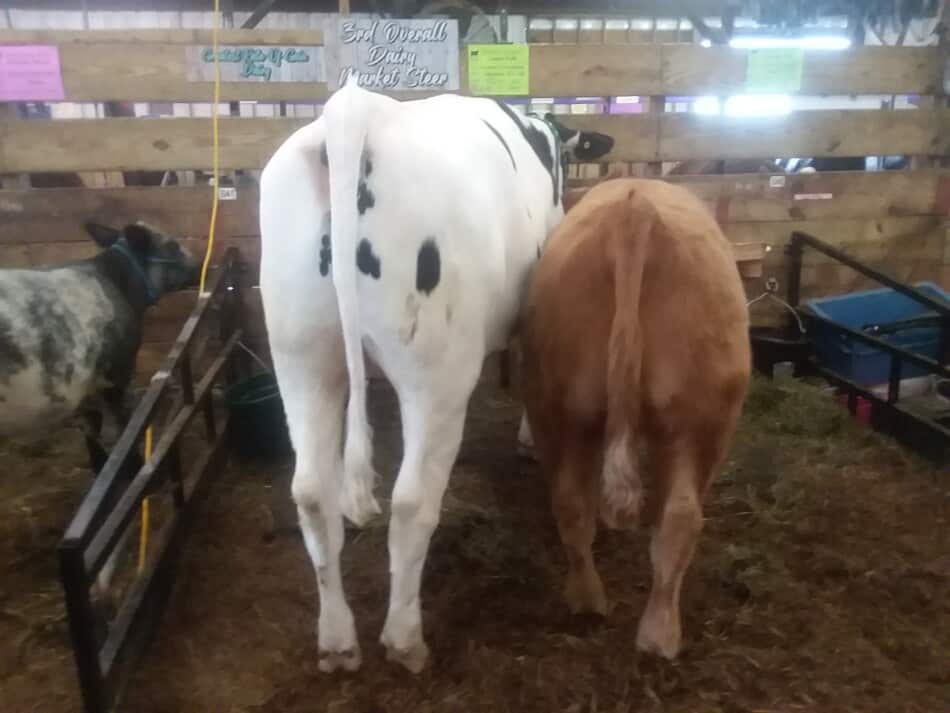
Biggest challenge to raising dairy steers
The biggest challenge with raising dairy steers will be location, as in finding them. Your area will either be full of diary calves or a ghost town.
If you live in an area with dairy farms or a weekly livestock auction that sells calves then you are all set. There will be plenty of opportunities for you to get a start with a dairy steer!
However, if you are struggling to come up with a dairy farm anywhere close to you, raising a dairy steer will be tough, since it will be challenging to find them!
Find dairy steers by looking online
Not sure where to look? Great places to start your search to find potential calves to buy are the market reports of the closest livestock auction to you and the county fair show schedule.
The livestock auction makes sense, back to the farm bull calves are what you are looking for, since those are bottle babies.
What’s with the county fair schedule? That’s an easy one, if there is a yearly class for dairy steers, specifically the junior fair dairy beef class, then there are dairy calves available in your area.
Also, check your online ads. In our area there are multiple ads for people wanting to sell started dairy calves, meaning calves that are 400-500 pounds and ready to come to your house and grow.
Of course, these will cost more than a calf you bottle feed, but they might be a better option for someone who wants a few dairy feeder calves, yet does not want to do the bottle feeding.
Do Holstein steers make good beef?
In 2018, the dairy sector contributed 5.6 billion pounds (21.0%) of beef to the U.S. commercial beef supply from finished steers, finished heifers and cull cows.
https://www.farmanddairy.com/news/dairy-cattle-a-big-part-of-us-beef-supply/552832.html
You bet, as do Jersey steers, or any other dairy breed for that matter!
You may not realize it, but 21% ( in 2018, as high as 24% in 2015) of all of the beef in the stores is from dairy genetics.
We never raised a Holstein steer, but we raised plenty of Jersey and Jersey cross cattle, plus a great set of Milking Shorthorn steers.
We had a Brown Swiss calf (only one since we only had one Swiss cow) that my late father in law raised from a bottle for freezer beef.
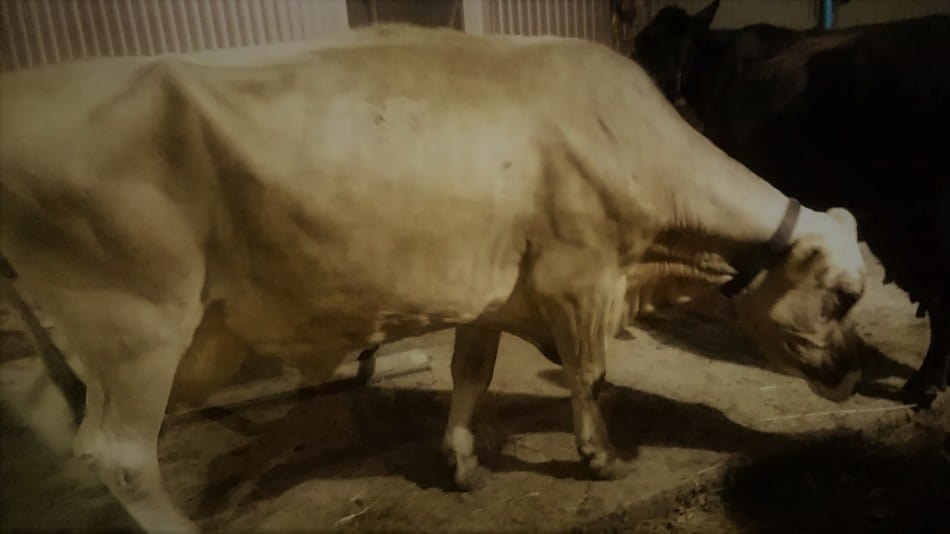
Dairy/beef cross and heifers as beef
In an effort to get a bit more money from their dairy cows, many dairy farmers are breeding their cows to beef bulls to get a meatier calf to sell. This is good news for you!
Normally, part of the competition for buying calves at the auction or off the farm is farmers wanting to raise a dairy heifer.
A dairy farm does not want a half dairy, half beef heifer in the milking herd, they need 100% dairy, but you don’t!
The trend toward half beef genetics bottle babies is great for anyone wanting to raise their own beef! Our best beef animals lately have been half Angus half Jersey calves, raised completely on pasture. They turned out great!
Please note: I have been using the term steer through out this article, it really should include steers and heifers, to be completely accurate. To keep it simple, I use steer.
Why not just get a beef steer?
You definitely could get a beef steer and if your area is a dairy cattle free zone, that’s probably your best option.
Be sure to get a high quality animal, don’t cheap out here.
Some beef cattle will never produce good, meaty carcasses, they are not built for it. If you get a beef calf, be sure you are getting the build that should go with it!
Even in primarily beef cattle areas there will be calves available. An easy example here is a twin, especially a heifer that is born twin to a bull (the heifer will have a messed up reproductive tract so she must be sold for beef, not kept as a potential replacement).
Twins are hard for a cow to successfully raise.
The answer is supplemental bottle feeding for one or both of the twins, making the best of a poor situation.
Generally, beef producers are not keen on bottle babies. This is your opportunity to get a nice bottle baby, in an area where bottle babies are hard to come by.
Do you eat dairy cows?
Yes! It’s full of flavor and being specifically sought out by chefs who prize flavor and are mindful of sustainability of their meat sources.
Search “beef from dairy cows” and you’ll be surprised at all of the articles that come up. Here is one featuring the restaurant Jackrabbit, in Portand, Oregon.
We call dairy cattle ‘antique’ because it’s got age on it and it’s been worked, and we make a burger with it because it’s got depth and character—it’s not one dimensional.”
https://www.foodandwine.com/news/dairy-cattle-cheeseburgers written by Lisa Elbert
We usually had a cull cow in the freezer, especially one that wouldn’t sell well through the sale.
A cull cow will provide you with great, flavorful meat for a fraction of the price of a younger beef steer.
Let me be clear, you will probably be disappointed in the grilling type steaks that you would get from a cull cow, she won’t have the marbling you are looking for in these cuts.
It’s not that she’s a dairy cow, this is an age thing, a cull beef cow wouldn’t be steak material, either.
If you are all about steaks, then you should pay the extra money and get a well finished beef steer.
Cull cows for beef
If you are considering a cull cow, know that she’s more the roast and ground beef type. The flavor will be super and the price will be crazy good!
The unexpected gem of getting a cull cow for beef is the loin. Be sure to get the tenderloin for fillets, you’ll be glad you did!
If you eat a lot of ground beef at your house, a cull cow is the way to go. Otherwise, why are you paying extra for less flavor?
The biggest advantage to cull cows for freezer beef is the price. Just last week we were at the Mt. Hope auction and saw some of the dairy cull cows selling.
A nice looking Jersey went through the ring and sold for $0.34/pound. That’s about $272 total, if you figure she weighs around 800 pounds.
You can get a lot of very economically priced beef for your freezer when you are able to buy a healthy cow for less than $300.00!
I know that buying a cull cow won’t work for everyone, but if you eat mostly burger and roasts anyway, give it some consideration!
I should also mention beef brood cows as cull cows. They usually sell for more per pound than a dairy breed cull cow, but they are also a wonderful, low cost option for beef!

